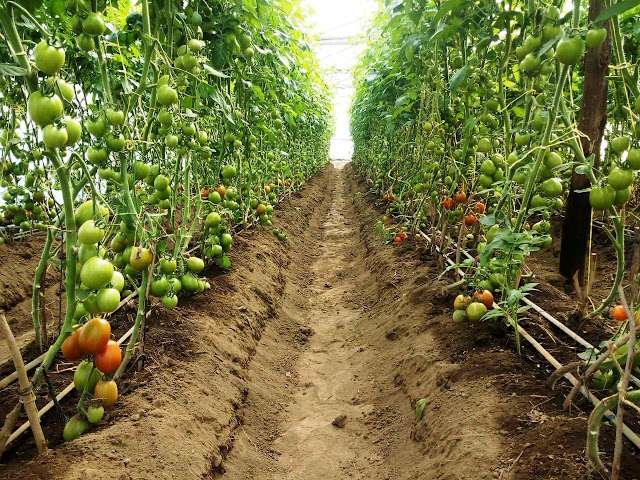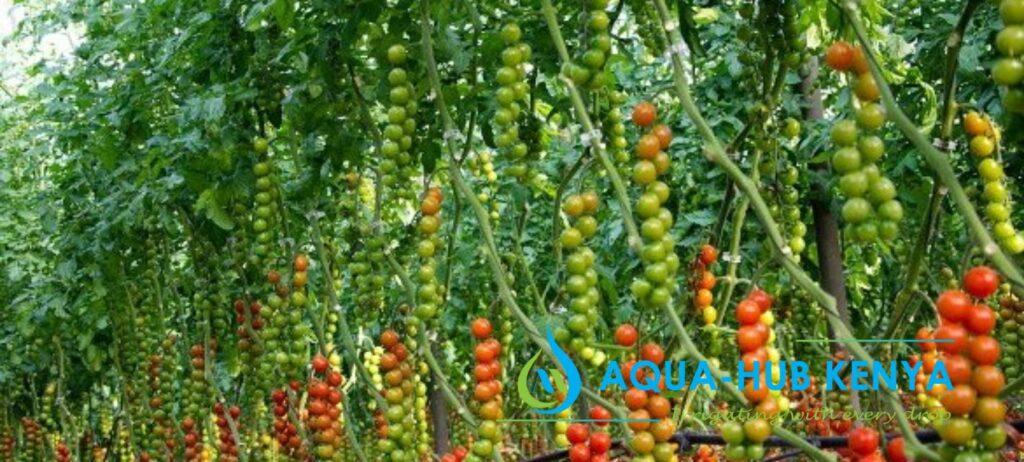Drip Irrigation in Tomato Farming

Tomato plants are sensitive to water deficits and therefore require a highly reliable method of irrigation. Drip irrigation in tomato farming requires at least 3 times per week to prevent waterlogging which affects the health of tomatoes.
Aqua Hub’s Components for Drip Irrigation in Tomato Farming
Aqua Hub’s drip irrigation kits for tomato farming provide a perfect way to achieve a target amount of water for every tomato plant.
Learn about our drip irrigation Components below;
- Start HDPE ( Mainline pipes) plus sub-mainline pipes (smaller diameter size than sub mainline pipes.
- Filtration Kits ( Screen or Disc filter as per the water use Specs)
- Pressure Regulators
- Air valves
- Tank Connectors
- Fittings for HDPE pipes
- Driplines
- Lateral pipes or raisers (Low Density Poly Ethylene)
- Dripline fittings
- Ball valves
Here’s to Why You Should Buy From Us
High-quality drip irrigation accessories – We deliver quality drip irrigation kits to our clients to ensure non-interruptible water supply to your tomato plants.
UV additives – Our driplines, pipes and connection fittings are products with quality UV additives that resist degradation.
Conditions for Tomato Cultivation
Well-drained and loose loam soil of PH 6 – 7.5
A warm environment of 22 – 29 degrees Celsius.
Adequate water supply at least 1-2 inches deep every week.
Starting tomato Drip Irrigation Farming
You should start by checking whether your soil and climatic conditions is suitable for tomato farming.
Find an agronomist to conduct soil test and advice on what fertilizer and tomato variety you can do.
Preparing the farm
Preparation involves clearing the land and ploughing the field deep about 10 cm deep, good for proper root growth.
Depending on the soil PH, you can add manure or lime to improve the PH.
Seedling Preparation
Tomato farming seedling propagation can be done in planting beds or in seedling trays.
Seedling preparation on beds should be done on a good drainage soil. Beds should take 1 M width size and height of 15 cm.
Make drills on the beds, sow the seeds and cover with light soil. After sowing the seeds, water daily using cans until they mature enough to transplant.
For prevention of insects and harsh sunlight, it is best if seedling beds are prepared inside shade net or insect net houses.
Transplanting of tomato
Transplant the seedlings after 4-6 weeks of propagation. You can transplant tomato plants to an open field or inside greenhouse environments.
Greenhouse environment is best for tomatoes, due to optimal conditions and minimal water use.
How to Ensure Efficiency of Drip Irrigation in Tomato Farming
- Maintain a frequency of 3-4 irrigation times per week
- You should water at least 30 minutes for proper moisture reach to the root zones
- Irrigation needs to be done in the morning or late evening to lower evaporation and water losses.
- Regular monitoring of soil moisture to determine whether to increase or reduce the irrigation rate.
Why Drip Irrigation in Tomato Farming?
- Uniform moisture distribution and plant absorption along the soil base of the tomato plant lines
- Weed growth at the base of tomato root zones is minimal and easy to control.
- Easier nutrient supply using fertilizer injectors connected to the drip irrigation system.
- High capacity to control water and nutrient application in tomato fields.
- Production of quality and healthy tomato fruits
- 100 percent fruit development and ripening as diseases such as bacterial wilt, fusarium, and fruit rots are prevented.
- Extended harvesting season owing to the adequate nutrient and water supply.
Where to Buy Accessories for Setting Up Drip Irrigation in Tomato Farming
Aqua Hub is the among the top suppliers of drip irrigation accessories in Kenya. We conduct installation and training to our clients about drip irrigation in tomato farming and other crops.
Call 0790719020

